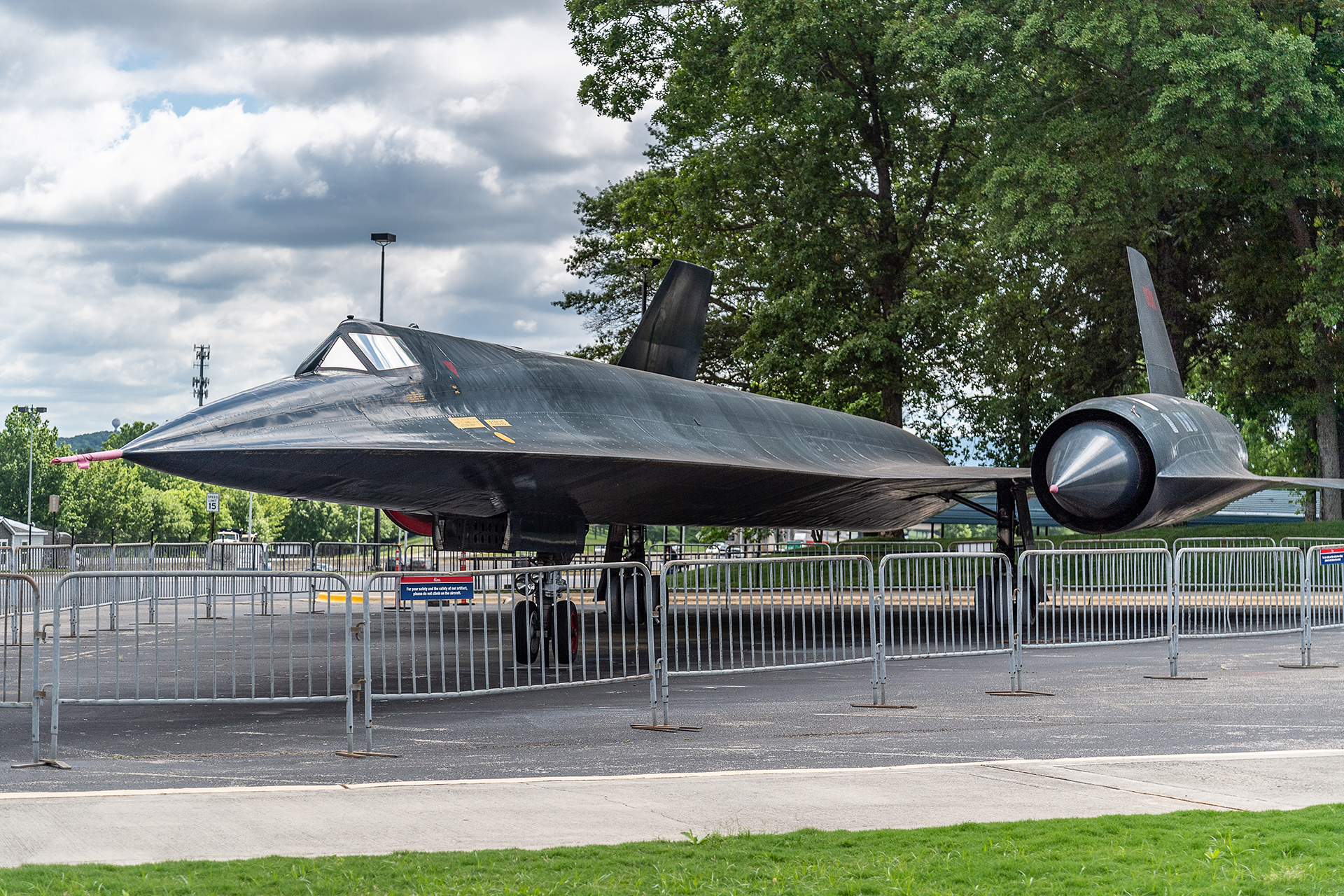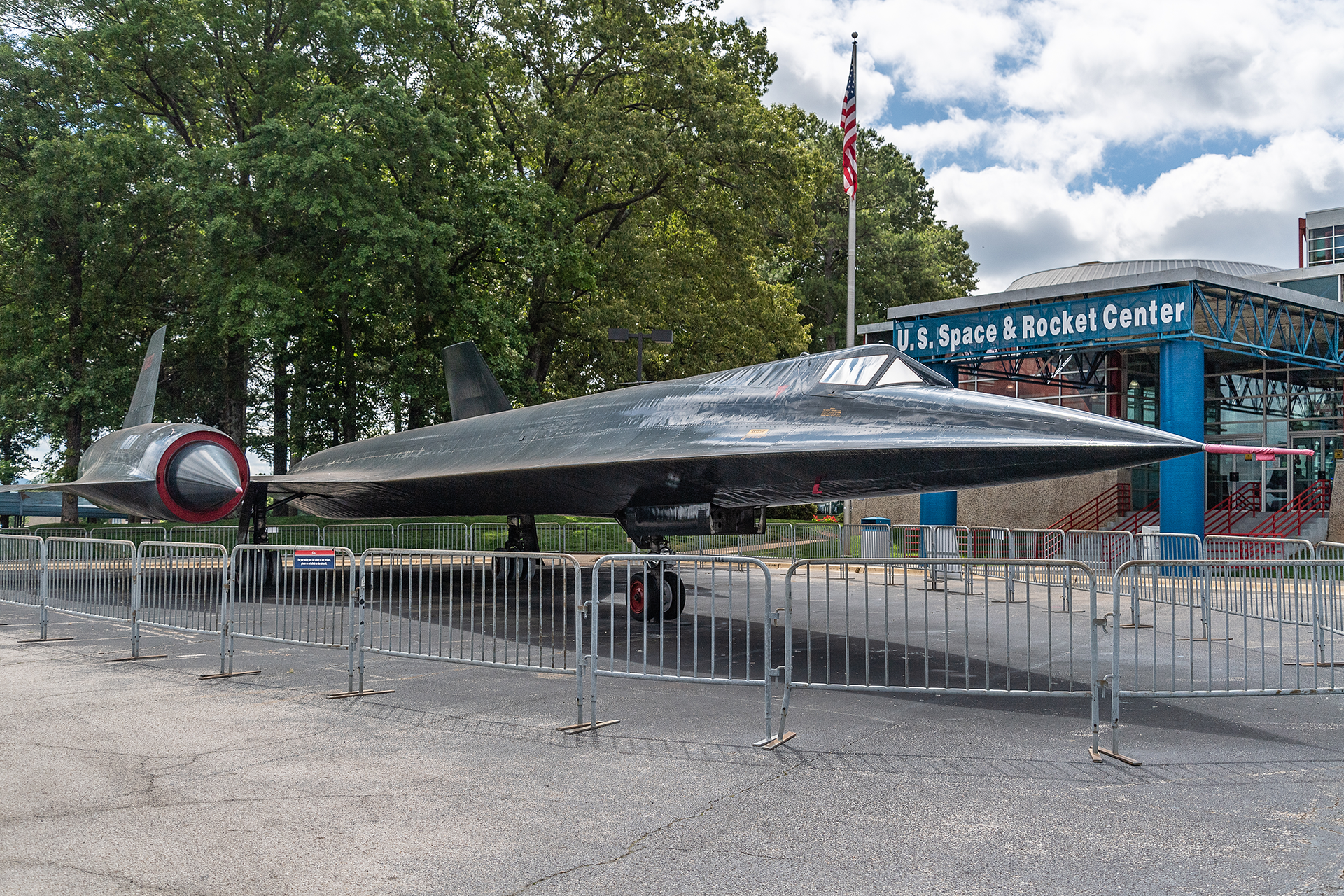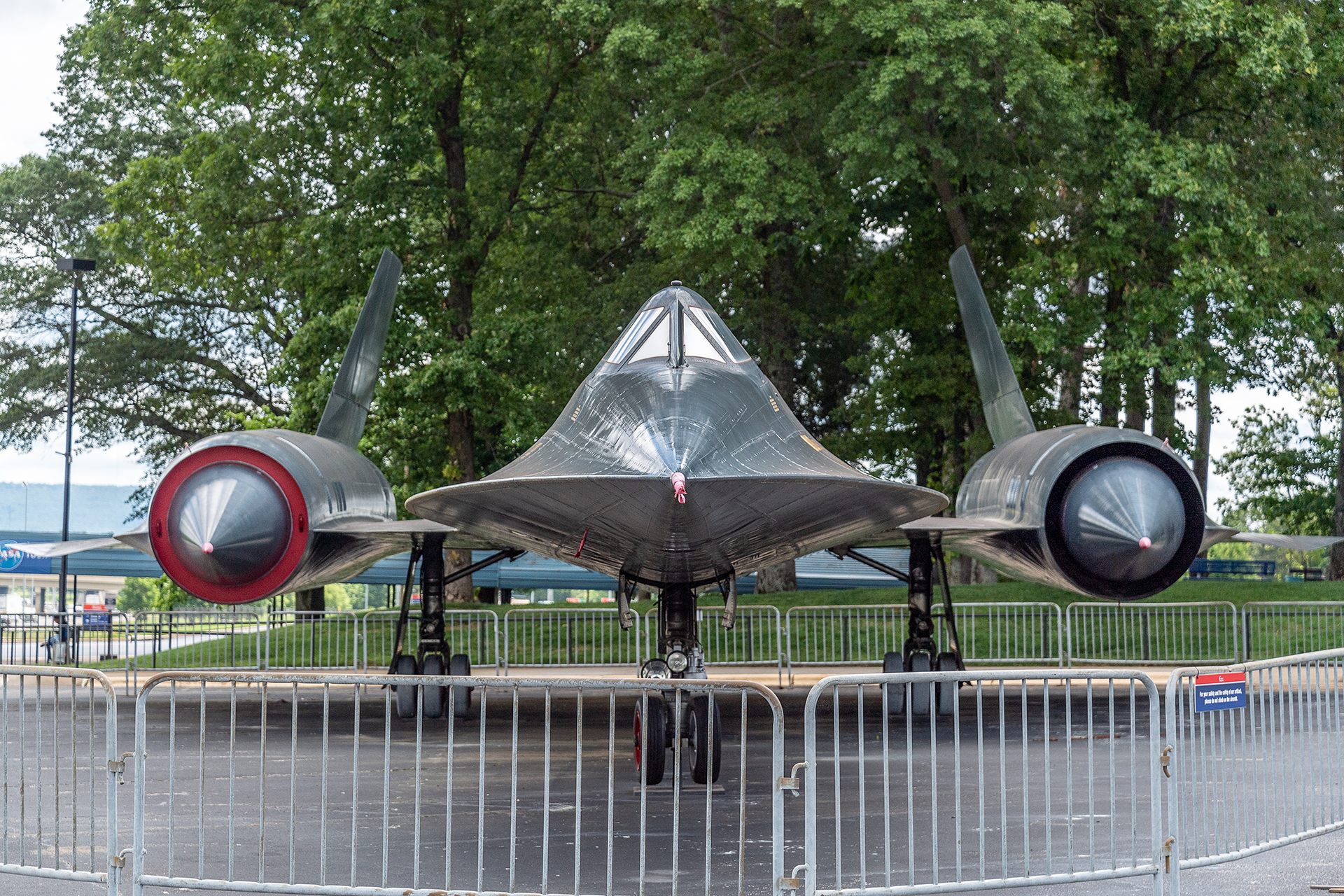
The A-12 is the clandestine forerunner of the famous SR-71 Blackbird. The aircraft were nearly the same shape and dimensions. Both are over 100 feet long with a 55-foot wingspan, and weighed in between 120,000 (54,431kg) and 140,000 pounds (63,503kg) when fully fueled. The SR-71 holds many aviation records but the smaller, lighter A-12 has flown faster and higher (Mach 3.29/2,171 mph (3,494 kph) and 96,250 ft (29,337 m)). However, the A-12 holds no records because its existence was a closely held secret. All A-12s were CIA assets flown by 11 former USAF pilots. Between 1962 and 1968, these eleven CIA pilots plus seven Lockheed test pilots flew almost 2,900 sorties totaling more than 5,000 flight hours. Of these flights, 29 operational missions were flown by A-12s over North Vietnam, North Korea and Laos/Cambodia between May 31, 1967, and May 8, 1968. These surveillance missions were taken over by the USAF SR-71 in 1968 and the seven remaining A-12s were then placed in non-flyable storage for more than 20 years.
The development of what would eventually be a stable of fifty “Blackbirds” began in 1959 when the CIA asked Lockheed’s C. L. Kelly Johnson to investigate the possibility of a fast, high-flying replacement for the U-2 reconnaissance aircraft. The design, development and manufacturing of this unique aircraft was a tribute to Johnson’s team. They installed untested engines into an ultra-slim titanium body without the assistance of digital computers or experience in titanium manufacturing. The co-development of titanium alloys and JP-7 fuel allowed the aircraft to operate at speeds where the aircraft’s skin temperature reached 500 to 1000 degrees for over an hour of Mach 3 flight. On April 25, 1962, the first A-12 took off from the covert airbase at Groom Lake, sometimes called Area 51. One week later, the A-12 exceeded Mach I for the first time. The A-12 was designed to use a sophisticated down-looking camera that, in clear weather, could photograph a 12-inch (30.5 centimeter) object from 90,000 feet (27,432 meters)! Although this unique reconnaissance capability provided important intelligence to the CIA and DOD, the SR-71 had the ability to photograph and electronically surveil target areas to the side of the aircraft. The priority of this capability spelled the end of the A-12 missions while the SR-71 operated for the USAF and then NASA until 1999. 
 In 1989 the CIA declassified the A-12 program and offered the seven remaining A-12s and one trainer to museums. The A-12 located at the U.S. Space & Rocket Center is the seventh of twelve “articles” built by the Lockheed’s Skunkworks in Burbank, CA. Our Article 127 first flew in 1963 with a total of 258 flights while logging almost 500 flight hours. It was dedicated at the Rocket Center on February 1, 1991, and repainted in 2017. This aircraft is on loan from the National Museum of the U. S. Air Force.
In 1989 the CIA declassified the A-12 program and offered the seven remaining A-12s and one trainer to museums. The A-12 located at the U.S. Space & Rocket Center is the seventh of twelve “articles” built by the Lockheed’s Skunkworks in Burbank, CA. Our Article 127 first flew in 1963 with a total of 258 flights while logging almost 500 flight hours. It was dedicated at the Rocket Center on February 1, 1991, and repainted in 2017. This aircraft is on loan from the National Museum of the U. S. Air Force.

